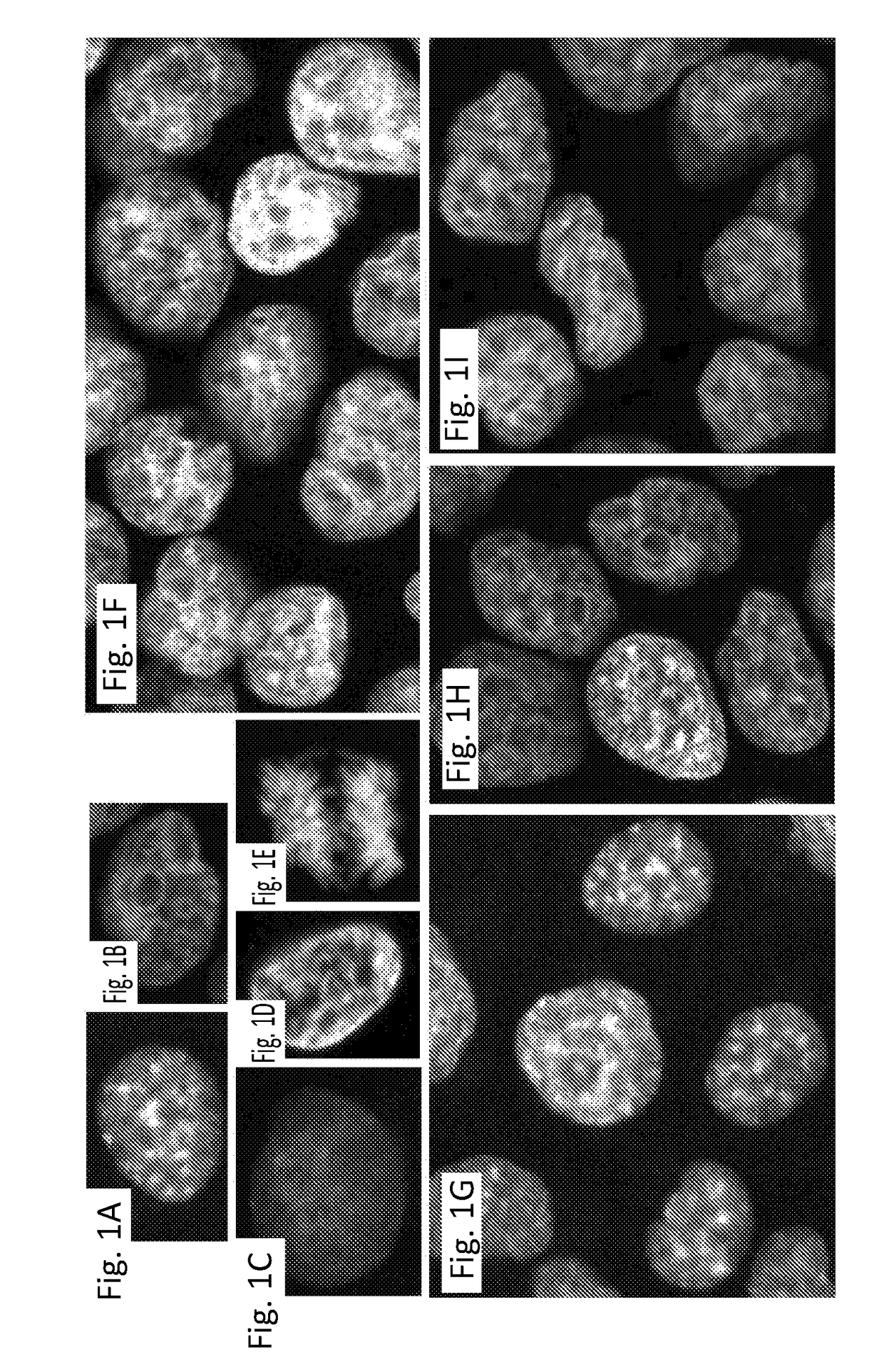Automated delineation of nuclei for three dimensional (3-d) high content screening
a three-dimensional, high-content technology, applied in the field of system and method for image processing, can solve the problems of slow and unreliable 3-d image processing, negatively affecting the performance of studying a drug response,
- Summary
- Abstract
- Description
- Claims
- Application Information
AI Technical Summary
Benefits of technology
Problems solved by technology
Method used
Image
Examples
example 1
[0043]By way of additional background, the objective and quantitative analysis of images from cells labeled with immunofluorescent probes takes microscopy from being purely visual, qualitative and subjective to a higher level. Quantitative analysis of fluorescently labeled molecular targets in cells can provide information of their spatial distribution, amounts and topology. The advantage of quantitative microscopy in cellular studies is further enhanced by the addition of automation. High-content screening (HCS)—or the automated acquisition of fluorescently labeled cellular images followed by an automated analysis enables the quantitative assessment of large numbers of images, thereby paving the way for large scale experiments in which multiple conditions are examined simultaneously, as described in Cox K L et al. Immunoassay Methods. In: Assay Guidance Manual. Edited by Sittampalam G S, et al. Bethesda (Md.); 2004; Buchser W, et al.: Assay Development Guidelines for Image-Based Hi...
example 2
[0076]The results from another approach to delineating cell nuclei are demonstrated in FIGS. 11 and 12. In this approach two-dimensional color images of human tissues stained with hematoxylin and eosin were color-normalized and then color-deconvoluted to provide a monochromatic hematoxylin image for the segmentation of nuclei. Similarly to the 3D-RSD, a set of parameters namely the nuclear radii Riε[5, 11] and nuclear shape defined by shullxy=0.95 and exy=1.5 that was a priori defined. The nuclear mask was obtained by a parameter free histogram thresholding (see Zack G W, et al.: Automatic measurement of sister chromatid exchange frequency. The journal of histochemistry and cytochemistry: official journal of the Histochemistry Society 1977, 25(7):741-753). The segmentation was then performed using the following sequence of routines: 2-D radial symmetry transform followed by the 2-D top-hat transform to obtain a radial symmetry image, and the adaptive seed placement followed by the 2...
PUM
 Login to View More
Login to View More Abstract
Description
Claims
Application Information
 Login to View More
Login to View More - R&D
- Intellectual Property
- Life Sciences
- Materials
- Tech Scout
- Unparalleled Data Quality
- Higher Quality Content
- 60% Fewer Hallucinations
Browse by: Latest US Patents, China's latest patents, Technical Efficacy Thesaurus, Application Domain, Technology Topic, Popular Technical Reports.
© 2025 PatSnap. All rights reserved.Legal|Privacy policy|Modern Slavery Act Transparency Statement|Sitemap|About US| Contact US: help@patsnap.com



